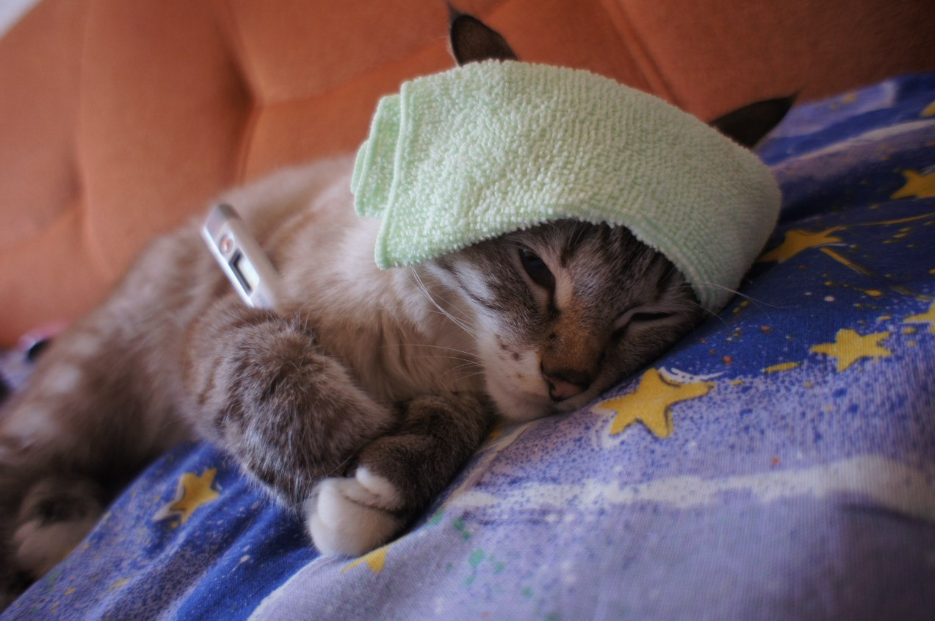According to the Pet Poison Hotline, the top five sources of cat poisoning are:
No. 1: Medications for people
Pets have a much greater sensitivity to many of the common over-the-counter and prescription medications that may be in your home.
Some of the medications that often poison cats include:
- Non-steroidal anti-inflammatory medications, such as ibuprofen or naproxen. The most common cause of pet poisoning, these painkillers can cause ulcers in the stomach and intestines, and kidney damage.
- Acetaminophen (Tylenol) is particularly toxic to cats, resulting in red blood cell damage. Just two extra-strength tablets may prove fatal to felines.
- Antidepressants may cause vomiting and, in more serious instances, serotonin syndrome – a dangerous condition that raises the temperature, heart rate, and blood pressure, and may cause seizures.
- Methylphenidate, an attention deficit hyperactivity disorder (ADHD) drug, is a stimulant for pets, raising heart rate, blood pressure, and body temperature.
No. 2: House plants
Cats are notorious for noshing on houseplants, and the habit isn’t just bad for your potted treasures. Many common, beautiful houseplants contain cat poisons that can cause serious harm, and even death. Some of the plants toxic to cats include:
- Lilies. Ingesting even small amounts of Easter lilies and related plants can cause severe kidney failure in cats.
- Azaleas and rhododendrons. These pretty flowering plants contain toxins that may result in vomiting, diarrhea, coma, and sometimes even death.
- Tulips and daffodils. The bulbs of these plants, if ingested, may cause serious stomach problems, convulsions, and damage to the heart.
- Sago palms. Eating just a few seeds may be enough to cause vomiting, seizures, and liver failure.
No. 3: Insecticides
Products for your lawn and garden may be poisonous to animals that ingest them, perhaps by grooming themselves after walking or laying in a recently treated area.
No. 4: Household cleaners
Just as cleaners like bleach can poison people, they are also a leading cause of pet poisoning, resulting in stomach and respiratory tract problems. Other common household products dangerous to cats include laundry detergent, kitchen and bath surface cleaners, carpet cleaners, and toilet bowl cleaners.
No. 5: Glow sticks and jewelry
You went to a concert or a fireworks display and brought home a glow stick or glow necklace. Cats are attracted to them, but they contain a very bitter-tasting liquid called dibutyl phthalate. While rarely deadly, just one bite into glow sticks can cause your cat to drool profusely
Other common sources of poison to cats include:
- Gum and candy that contain xylitol
- A sugar substitute that harms cats and dogs.
- Chocolate
- Onions, garlic, chives
- These plant foods can irritate the stomach and damage red blood cells.
- Rat and mouse poison
- Rodenticides, if ingested, can cause severe symptoms and may be fatal.
- Pet medications
Just as we can be sickened or killed by medications intended to help us, cases of pet poisoning by veterinary drugs are not uncommon. Some of the more commonly reported problem medications include painkillers and de-wormers.
Chemical hazards
Not surprisingly, chemicals contained in antifreeze and paint thinner, and chemicals for pools, can act as cat poisons. The symptoms they may produce include stomach upset, depression, and chemical burns.
Heavy metals
Lead, which can be found in paint, linoleum, and batteries, can be poisonous if eaten by your cat. If ingested, lead can cause gastrointestinal and neurological problems.
What to Do for Suspected Cat Poisoning
If you think your cat has been poisoned, try to stay calm. It is important to act quickly but rationally.
First, gather up any of the potential poison that remains — this may be helpful to your veterinarian and any outside experts who assist with the case. If your cat has vomited, collect the sample in case your veterinarian needs to see it.
Poison Protection: Pet-Proofing Your House
The best way to reduce the chances that your beloved cat will be the victim of pet poisoning is by preventing exposure to dangerous substances.
- Keep all medications, even those in child-proof bottles, in cabinets that are inaccessible to your cat. If you inadvertently drop a pill on the floor, be sure to look for it immediately. To make sure others don’t accidentally drop a pill, supervise children and older adults who may need help taking medications.
- Always follow guidelines on flea or tick products, and never use products formulated for dogs on cats.
- Although you can give some ”people foods” safely to your pets as a treat, others are toxic. If you have any questions about what is safe, ask your veterinarian. Or, err on the safe side and give treats made specifically for animals.
- Be sure any rodenticides you use are kept in metal cabinets or high on shelves where your pets can’t find them. Remember that cats can be fatally poisoned by eating an exposed rodent, so always be very cautious about using these products. Tell your neighbors if you put out rat bait, so they can protect their pets from exposure, and ask them to do the same for you.
- When buying plants for your home, opt for those that won’t cause problems if your cat happens to nibble on them. The ASPCA has an online list of toxic and nontoxic plants by species. If you choose to have toxic plants, be sure they are kept in a place where your pets can’t reach them.
- Store all chemicals and cleaners in pet-inaccessible areas of your home.
